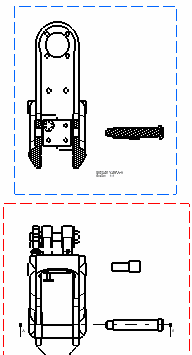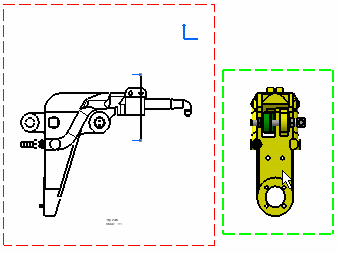Click Offset Section View
 or Offset Section Cut
or Offset Section Cut
 in the Views toolbar (Sections sub-toolbar).
in the Views toolbar (Sections sub-toolbar).
The Tools Palette is displayed with only offset constraint:

Click to create the first point of the profile.
The Tools Palette
is displayed with the following constraint options:

You can select any one of these constraints, Parallel, Perpendicular, Angle or Offset.
Click the appropriate constraint.
To set the direction of the profile, select one of the following valid reference element:
-
A generated line, such as an
edge, a center line or an axis line. In this case, the constraint will be associative
to the referenced 3D geometry.
- A generated circle. In this case, the constraints will be associative to the 3D.
-
One of the coordinates axis of the sheet. In this case, the constraint will not be associative to the 3D.
-
A sketched line. In this case, the constraint will not be associative to the 3D.
The section plane appears on the 3D part and moves dynamically
on the part.
Double-click to end the cutting profile creation.
When creating an offset section view, remember that positioning
the section view using the cursor amounts to defining the section view direction.
The cutting profile is hole associative.
Click to define the section view direction and to position the view on
the sheet.


Even when the view is generated, you can edit and modify
the section profile. To do this, double-click this profile and either invert
or replace it.

Double-click when you are satisfied with the position of the rotating
profile that automatically appears on the 3D view.

Click to define the section cut direction and to position
the view on the sheet.
